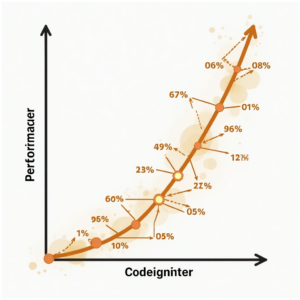
Introduction to CodeIgniter and Performance Optimization
CodeIgniter is a powerful PHP framework used for building web applications. However, as with any framework, optimizing its performance is crucial for ensuring that your application runs smoothly and efficiently. In this article, we will explore the best practices for optimizing CodeIgniter applications for maximum performance.Optimizing your CodeIgniter application involves a combination of techniques, including caching, database optimization, and code refactoring. By implementing these techniques, you can significantly improve the speed and performance of your application, providing a better user experience for your visitors.
Caching in CodeIgniter
Caching is a crucial aspect of optimizing CodeIgniter applications. By caching frequently accessed data, you can reduce the number of database queries and improve the overall speed of your application. CodeIgniter provides a built-in caching system that allows you to cache views, models, and controllers.To use caching in CodeIgniter, you need to enable the caching driver in your application’s configuration file. You can then use the caching functions provided by CodeIgniter to cache your data. For example, you can use the $this->cache->get() function to retrieve cached data and the $this->cache->save() function to store data in the cache.

Database Optimization
Database optimization is another critical aspect of optimizing CodeIgniter applications. A well-optimized database can significantly improve the performance of your application. CodeIgniter provides a variety of database-related functions that can help you optimize your database queries.One of the most effective ways to optimize your database queries is to use the $this->db->query() function instead of the $this->db->get() function. The $this->db->query() function allows you to execute raw SQL queries, which can be more efficient than using the active record functions provided by CodeIgniter.
Code Refactoring
Code refactoring is an essential step in optimizing CodeIgniter applications. By refactoring your code, you can improve its readability, maintainability, and performance. CodeIgniter provides a variety of functions and helpers that can help you refactor your code.One of the most effective ways to refactor your code is to use the Model-View-Controller (MVC) pattern. The MVC pattern allows you to separate your application logic into three distinct components: models, views, and controllers. This separation makes it easier to maintain and optimize your code.
Best Practices for Optimizing CodeIgniter Applications
There are several best practices that you can follow to optimize your CodeIgniter applications. Some of these best practices include:Using caching and database optimization to reduce the number of database queries and improve the overall speed of your application.Refactoring your code to improve its readability, maintainability, and performance.Using the MVC pattern to separate your application logic into distinct components.Avoiding the use of unnecessary libraries and helpers to reduce the overall size of your application.
Conclusion
In conclusion, optimizing CodeIgniter applications for maximum performance involves a combination of techniques, including caching, database optimization, and code refactoring. By following the best practices outlined in this article, you can significantly improve the speed and performance of your application, providing a better user experience for your visitors.Remember, optimizing your CodeIgniter application is an ongoing process that requires regular maintenance and upkeep. By staying on top of your application’s performance and making adjustments as needed, you can ensure that your application continues to run smoothly and efficiently.

